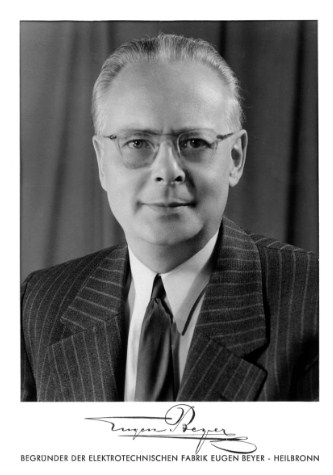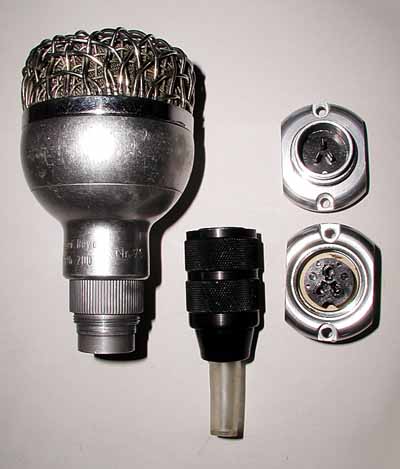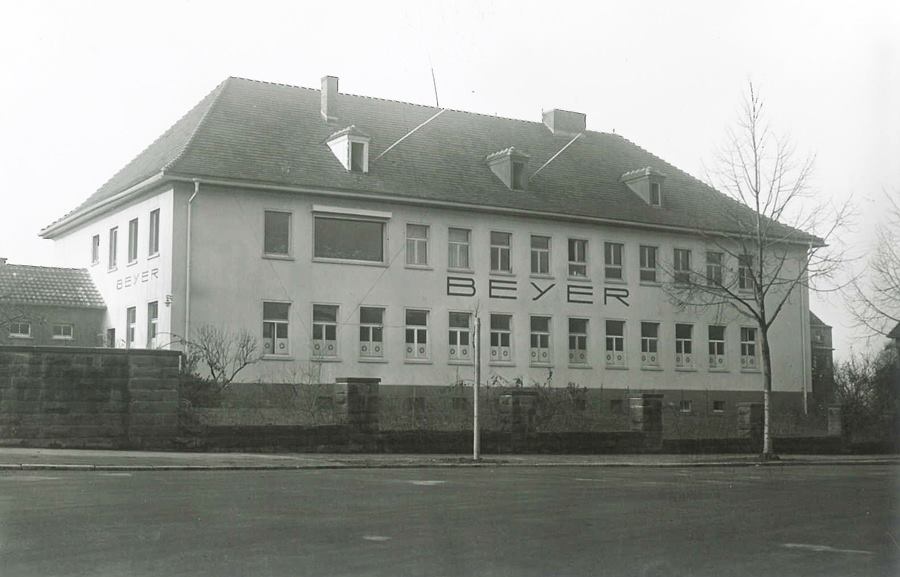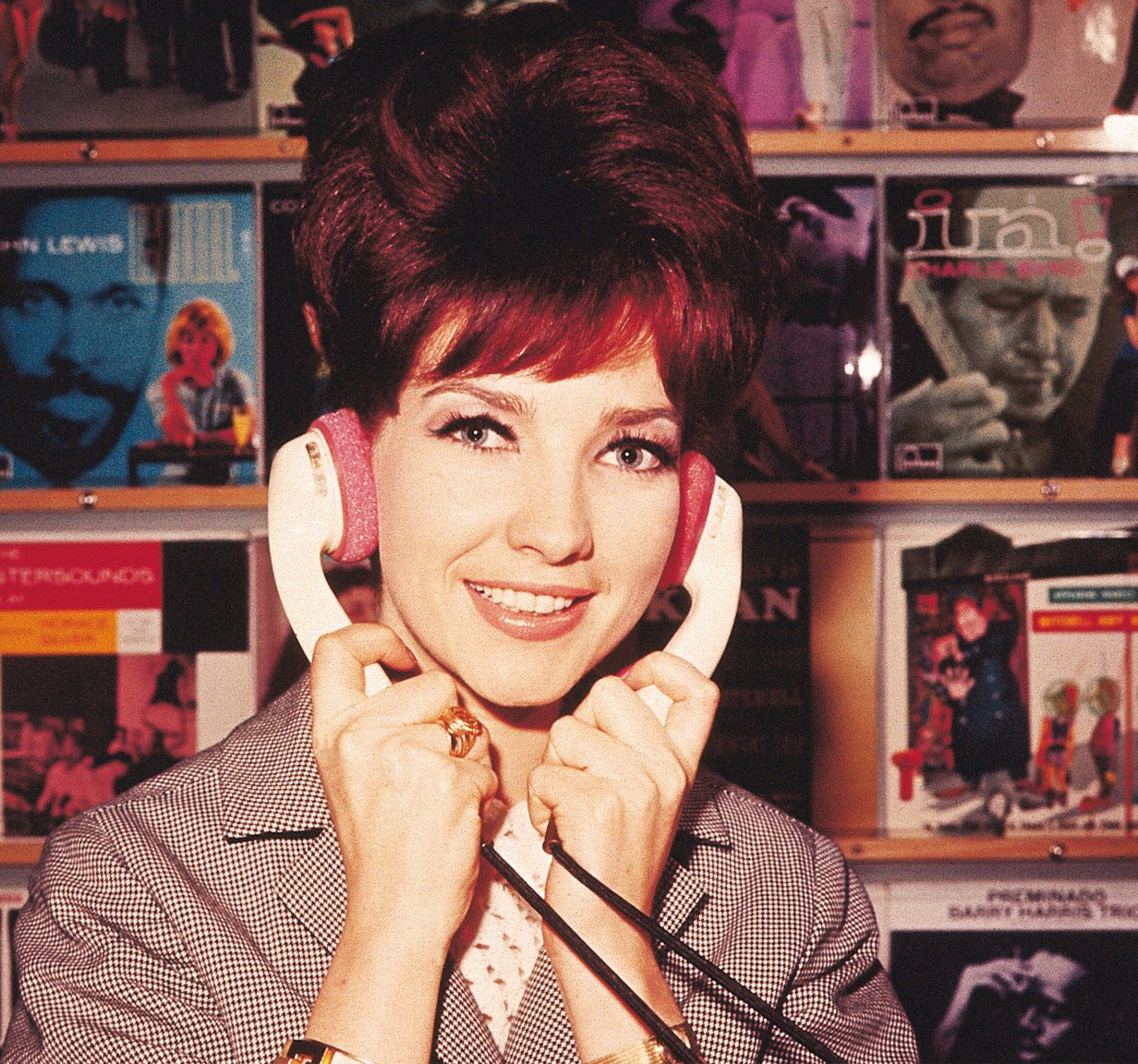Personality and sound: Eugen Beyer - the man who always looked to the future
One of the personalities who made a significant contribution to the development of modern sound equipment is Eugen Beyer. It was this person who created the company, which became on a par with Sennheiser, Telefunken, Elac and Manger, as a living embodiment of high German quality in audio.

During its existence, Beyerdynamic specialists have introduced many innovations, including: the first full sound for cinemas, the first serial dynamic stereo headphones, the first specialized studio microphone, the first wireless concert microphone.
Today, this relatively small company is known worldwide as one of the manufacturers of high-quality studio audio equipment, as well as HI-FI and HI-END class headphones. The company owes its appearance and development to the founder, who was a talented engineer and generator of advanced ideas.
Eugen Beyer was born in 1903 in Stockholm. In the same year, the family moved to St. Petersburg (Russian Empire), where the future founder of the world famous brand lived and grew up. Relatively little is known about Beyer’s parents. Most biographers do not provide any reliable data about the future engineer and youth of the future engineer, except that he came from a German family. It is known that Eugen graduated from one of the St. Petersburg gymnasiums. The revolutionary events in the Russian Empire in 1918 force the Beyer family to return to Stockholm. Presumably, in 1921, after completing his studies at the University of Stockholm as an engineer, Eugen leaves Sweden. A young engineer travels to his ancestors' homeland, to Berlin, to find opportunities there for the development of his talents.
Beyer's biographers agree that he became interested in electrical engineering and acoustic experiences in adolescence, however, there is no documentary evidence of this, only scanty family memories. It is reliably known that Beyer viewed his work as an engineer and experimenter, as a way to contribute to the innovative area of knowledge for that time, and also as an opportunity to make money. According to family testimonies, in the gymnasium years, Eugen had a great interest in mathematics and physics, and he was not very successful in the humanities. It is also known that the interests of Eugen were shared by his brother Sergey Beyer, who would later take part in beyerdynamic projects.
In 1924 in Berlin, Eugen Beyer created the “Elektrotechnische Fabrik Eugen Beyer”, later renamed Beyerdinamic. In the early years of its existence, his company is a small but successful workshop for the production of dynamic loudspeakers.
Already in 1926, Beyer's speakers became a popular product, in connection with the emergence of the idea of sound in movies. Interestingly, Eugen anticipated the development of sound films, although most connoisseurs of the film market predicted the mute classics for many years. The first screening of the sound film took place as early as 1900, but the imperfection of the technology and the absence of a full-fledged technological and theoretical base, as well as interest from the emerging film industry, seriously delayed the introduction of innovation.

It so happened that Eugen Beyer became the first engineer who decided to create one of the missing links for sound films in Germany. This link was the speaker systems for cinemas. The risk was large enough, since the materials and elements for creating such systems at that time cost a lot of money, and Beyer’s business was just beginning. Meanwhile, for 2 years, Eugen was able to convince the leading film distribution companies in Germany that a silent movie has no future, and the cost of acoustic systems will pay for itself many times.
Beyer was right and everyone who agreed to invest in his systems really paid off the costs, because after 5 years dumb cinema was in a state of death agony. In the short 6 years from 1924 to 1930, the company developed intensively. A small electronic workshop turned into a successful industrial enterprise. Eugen managed to convince almost all German film distributors of the advantages of sound cinema, and by 1931 there were no cinemas left in Germany without acoustic systems.

The vast majority of cinema sound systems were created by the Beyer factory. The company's major competitors, such as Telefunken, were able to counter the firm's new product only with electrostatic panels, which, although they had several advantages over electrodynamic speakers, were extremely expensive and not very reliable (they often burned and worked for no more than 4 years).
By the beginning of the 1930s, there was a significant leap in studio recording technology. In 1933, EMI developed the world's first stereo recording technology, which became the basis for the subsequent creation of commercial stereograms. Innovation EMI was seen in the world, but did not find a commercial embodiment either in the 30s or 40s. Most of the records were produced in mono. However, the requirements for the quality of the recordings have seriously increased, mainly it concerned the cinema;
Being a real innovator, in 1935, Eugen initiated the development of studio headphones and a studio dynamic microphone. It should be noted that at that time there were no standards for headphones of one type or another, and the headphones themselves in the studio were more likely a rarity than a mandatory attribute. The sound was estimated using acoustic systems. Eugen Beyer decided once again to change the idea of sound and actually created the very concept of studio headphones, as an alternative to studio monitors. Studio microphones have already been released, but their capabilities were not sufficient for the growing demands of the market.

Two years of painstaking work on the device, a substantial part of which was spent by Beyer himself, led to a deafening success. In 1937, Eugen's company began mass production of dynamic headphones - its first DT 48 headphones, which not only became the benchmark for its time, but were also produced by the company until 2012 with only minor modifications. It was probably the first specialized studio headphones in the world, first in mono, and later in stereo. History does not know examples of another model of headphones that would exist on the market for so long.

In 1939, the Beyerdynamic M 19 dynamic microphone appears, also specially designed for studio use. In those years, the office of Joseph Goebbels was in great need in high-quality sound equipment, especially radio and emerging television. After evaluating the samples of microphones produced in Germany for the Reichsrundfunkgesellschaft (the national broadcasting company of Germany), it was M19 that was chosen. Many experts note that among the serial models of the 30s-50s, the M19 was one of the best in the world.

In addition to the speakers of the German radio, symphony concerts of the orchestras conducted by Furtwängler were broadcast into these microphones; the bosses of the Nazi Party from Hitler to Rosenberg spoke there. After the fall of the Third Reich for Beyer’s company, almost nothing has changed. M19 was in high demand until the mid-50s in West Germany, USA, Holland, and Great Britain.
During the years of war and post-war devastation, Beyer initiated the development of a number of products unique to their time. The most interesting thing is that Eugen looks to the future and knows in advance what the market will need in 5, 10 or 15 years. Meanwhile, at this time in Germany, competitors imperceptibly began to develop, impressed by Beyer's successes. One of these competitors is Fritz Zenheiser, who created the Labor W in the ashes of old laboratories.

Probably, realizing that Beyerdynamic’s monopoly will not last forever, Eugen seeks to devote maximum energy to promising developments. So in 1953, the revolutionary DT 49 “stick” mono headphones appeared, which actually opened up possibilities for creating disco bars (several places for test listening of records in a music store).

But the main research of the 50s is the “transistor” - the world's first wireless concert microphone. A distinctive feature of this device was the use of transistors, which made the microphone transmitter very compact by the standards of that time. Research to create a full-fledged semiconductor circuitry was started back in 1953, the microphone was mass-produced in 1962.
Sam Eugen Beyer did not live up to the serial release of new items. He died suddenly in 1959. The founder did not live only a few years before the true triumph of his creation. Over the next decade, his company's products were in demand by such stars as the Beatles and the Rolling Stones, and microphones were used at first-person press conferences.
Being an engineer and innovator to the core, Eugen did not pay much attention to marketing, which had fatal consequences. Beyerdynamic, who had ideal starting positions after the war and the most promising developments, lost an impressive share of the national and world markets to the compatriots from Sennheiser (for microphones) and overseas colleagues from KOSS (for headphones). The descendants of Eugen, who still own a substantial part of the assets of the company, have corrected mistakes with marketing. Today, Beyerdynamic is one of the most famous manufacturers of headphones and microphones on the planet.
Some advertising
Our catalog contains a wide range of products from Beyerdynamic , which is always in high demand among music lovers and professionals.

During its existence, Beyerdynamic specialists have introduced many innovations, including: the first full sound for cinemas, the first serial dynamic stereo headphones, the first specialized studio microphone, the first wireless concert microphone.
Today, this relatively small company is known worldwide as one of the manufacturers of high-quality studio audio equipment, as well as HI-FI and HI-END class headphones. The company owes its appearance and development to the founder, who was a talented engineer and generator of advanced ideas.
A resident of the Russian Empire and a graduate of the St. Petersburg gymnasium
Eugen Beyer was born in 1903 in Stockholm. In the same year, the family moved to St. Petersburg (Russian Empire), where the future founder of the world famous brand lived and grew up. Relatively little is known about Beyer’s parents. Most biographers do not provide any reliable data about the future engineer and youth of the future engineer, except that he came from a German family. It is known that Eugen graduated from one of the St. Petersburg gymnasiums. The revolutionary events in the Russian Empire in 1918 force the Beyer family to return to Stockholm. Presumably, in 1921, after completing his studies at the University of Stockholm as an engineer, Eugen leaves Sweden. A young engineer travels to his ancestors' homeland, to Berlin, to find opportunities there for the development of his talents.
Beyer's biographers agree that he became interested in electrical engineering and acoustic experiences in adolescence, however, there is no documentary evidence of this, only scanty family memories. It is reliably known that Beyer viewed his work as an engineer and experimenter, as a way to contribute to the innovative area of knowledge for that time, and also as an opportunity to make money. According to family testimonies, in the gymnasium years, Eugen had a great interest in mathematics and physics, and he was not very successful in the humanities. It is also known that the interests of Eugen were shared by his brother Sergey Beyer, who would later take part in beyerdynamic projects.
Movie sound or more than a startup
In 1924 in Berlin, Eugen Beyer created the “Elektrotechnische Fabrik Eugen Beyer”, later renamed Beyerdinamic. In the early years of its existence, his company is a small but successful workshop for the production of dynamic loudspeakers.
Already in 1926, Beyer's speakers became a popular product, in connection with the emergence of the idea of sound in movies. Interestingly, Eugen anticipated the development of sound films, although most connoisseurs of the film market predicted the mute classics for many years. The first screening of the sound film took place as early as 1900, but the imperfection of the technology and the absence of a full-fledged technological and theoretical base, as well as interest from the emerging film industry, seriously delayed the introduction of innovation.

It so happened that Eugen Beyer became the first engineer who decided to create one of the missing links for sound films in Germany. This link was the speaker systems for cinemas. The risk was large enough, since the materials and elements for creating such systems at that time cost a lot of money, and Beyer’s business was just beginning. Meanwhile, for 2 years, Eugen was able to convince the leading film distribution companies in Germany that a silent movie has no future, and the cost of acoustic systems will pay for itself many times.
Beyer was right and everyone who agreed to invest in his systems really paid off the costs, because after 5 years dumb cinema was in a state of death agony. In the short 6 years from 1924 to 1930, the company developed intensively. A small electronic workshop turned into a successful industrial enterprise. Eugen managed to convince almost all German film distributors of the advantages of sound cinema, and by 1931 there were no cinemas left in Germany without acoustic systems.

The vast majority of cinema sound systems were created by the Beyer factory. The company's major competitors, such as Telefunken, were able to counter the firm's new product only with electrostatic panels, which, although they had several advantages over electrodynamic speakers, were extremely expensive and not very reliable (they often burned and worked for no more than 4 years).
Studio headphones and microphone for Goebbels
By the beginning of the 1930s, there was a significant leap in studio recording technology. In 1933, EMI developed the world's first stereo recording technology, which became the basis for the subsequent creation of commercial stereograms. Innovation EMI was seen in the world, but did not find a commercial embodiment either in the 30s or 40s. Most of the records were produced in mono. However, the requirements for the quality of the recordings have seriously increased, mainly it concerned the cinema;
Being a real innovator, in 1935, Eugen initiated the development of studio headphones and a studio dynamic microphone. It should be noted that at that time there were no standards for headphones of one type or another, and the headphones themselves in the studio were more likely a rarity than a mandatory attribute. The sound was estimated using acoustic systems. Eugen Beyer decided once again to change the idea of sound and actually created the very concept of studio headphones, as an alternative to studio monitors. Studio microphones have already been released, but their capabilities were not sufficient for the growing demands of the market.

Two years of painstaking work on the device, a substantial part of which was spent by Beyer himself, led to a deafening success. In 1937, Eugen's company began mass production of dynamic headphones - its first DT 48 headphones, which not only became the benchmark for its time, but were also produced by the company until 2012 with only minor modifications. It was probably the first specialized studio headphones in the world, first in mono, and later in stereo. History does not know examples of another model of headphones that would exist on the market for so long.

In 1939, the Beyerdynamic M 19 dynamic microphone appears, also specially designed for studio use. In those years, the office of Joseph Goebbels was in great need in high-quality sound equipment, especially radio and emerging television. After evaluating the samples of microphones produced in Germany for the Reichsrundfunkgesellschaft (the national broadcasting company of Germany), it was M19 that was chosen. Many experts note that among the serial models of the 30s-50s, the M19 was one of the best in the world.

In addition to the speakers of the German radio, symphony concerts of the orchestras conducted by Furtwängler were broadcast into these microphones; the bosses of the Nazi Party from Hitler to Rosenberg spoke there. After the fall of the Third Reich for Beyer’s company, almost nothing has changed. M19 was in high demand until the mid-50s in West Germany, USA, Holland, and Great Britain.
"Vanga" German electroacoustics
During the years of war and post-war devastation, Beyer initiated the development of a number of products unique to their time. The most interesting thing is that Eugen looks to the future and knows in advance what the market will need in 5, 10 or 15 years. Meanwhile, at this time in Germany, competitors imperceptibly began to develop, impressed by Beyer's successes. One of these competitors is Fritz Zenheiser, who created the Labor W in the ashes of old laboratories.

Probably, realizing that Beyerdynamic’s monopoly will not last forever, Eugen seeks to devote maximum energy to promising developments. So in 1953, the revolutionary DT 49 “stick” mono headphones appeared, which actually opened up possibilities for creating disco bars (several places for test listening of records in a music store).

But the main research of the 50s is the “transistor” - the world's first wireless concert microphone. A distinctive feature of this device was the use of transistors, which made the microphone transmitter very compact by the standards of that time. Research to create a full-fledged semiconductor circuitry was started back in 1953, the microphone was mass-produced in 1962.
Sam Eugen Beyer did not live up to the serial release of new items. He died suddenly in 1959. The founder did not live only a few years before the true triumph of his creation. Over the next decade, his company's products were in demand by such stars as the Beatles and the Rolling Stones, and microphones were used at first-person press conferences.
Being an engineer and innovator to the core, Eugen did not pay much attention to marketing, which had fatal consequences. Beyerdynamic, who had ideal starting positions after the war and the most promising developments, lost an impressive share of the national and world markets to the compatriots from Sennheiser (for microphones) and overseas colleagues from KOSS (for headphones). The descendants of Eugen, who still own a substantial part of the assets of the company, have corrected mistakes with marketing. Today, Beyerdynamic is one of the most famous manufacturers of headphones and microphones on the planet.
Some advertising
Our catalog contains a wide range of products from Beyerdynamic , which is always in high demand among music lovers and professionals.
All Articles